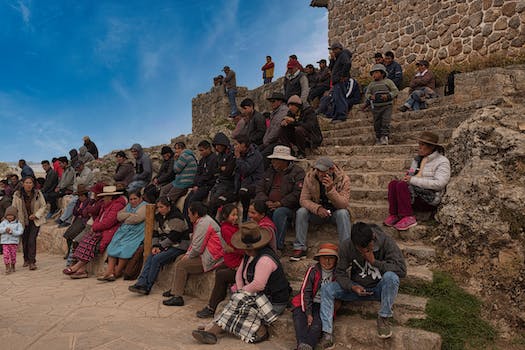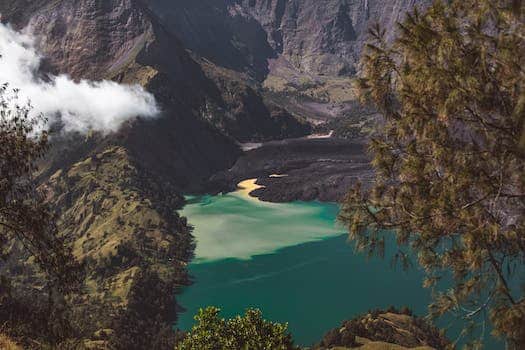Tourism has undoubtedly become a significant part of many local communities around the world. As travelers flock to various destinations, it is important to understand how locals perceive and experience this influx of visitors. This article delves into the insights and perspectives of locals towards tourism, shedding light on their thoughts, concerns, and experiences. By gaining a deeper understanding of how locals feel about tourism, we can foster a more sustainable and mutually beneficial relationship between tourists and the communities they visit.
- 1. Positive Impact of Tourism on Locals
- 1.1. Boost in Economy
- 1.2. Job Opportunities
- 1.3. Preservation of Culture
- 1.4. Infrastructure Development
- 1.5. Increased Standard of Living
- 2. Negative Impact of Tourism on Locals
- 2.1. Overcrowding and Traffic
- 2.2. Environmental Degradation
- 2.3. Rise in Cost of Living
- 2.4. Loss of Authenticity
- 2.5. Exploitation of Local Resources
- 3. Mixed Feelings towards Tourism
1. Positive Impact of Tourism on Locals
Tourism has a significant positive impact on the lives of locals in many ways. One of the most noticeable impacts is the economic benefits that tourism brings to local communities. When tourists visit a destination, they spend money on various goods and services, such as accommodation, food, transportation, and souvenirs. This influx of tourist spending helps to stimulate the local economy, create jobs, and generate income for local businesses and individuals.
Furthermore, tourism can also lead to the preservation and promotion of local culture and heritage. As tourists show interest in experiencing the authentic aspects of a destination, locals are encouraged to preserve their traditions, customs, and historical sites. This preservation not only helps to maintain the cultural identity of the community but also provides opportunities for locals to showcase their unique traditions and crafts to visitors.
In addition, tourism can contribute to the development of infrastructure and public services in a destination. The increased demand for tourism facilities and services often leads to improvements in transportation networks, healthcare facilities, educational institutions, and public amenities. These developments not only benefit tourists but also enhance the quality of life for locals, providing them with better access to essential services and improved overall infrastructure.
Lastly, tourism can foster a sense of pride and appreciation among locals for their own community. As tourists show interest in learning about the local culture, history, and way of life, locals often gain a renewed sense of pride in their heritage. This increased appreciation can lead to a stronger sense of community identity and a desire to protect and preserve the unique aspects of their locality.
Overall, the positive impact of tourism on locals is undeniable. It brings economic opportunities, promotes cultural preservation, improves infrastructure, and fosters community pride. However, it is important for sustainable tourism practices to be implemented to ensure that these benefits are enjoyed in a balanced and responsible manner, taking into consideration the well-being of both locals and tourists.
1.1. Boost in Economy
Tourism has a significant positive impact on the local economy. As travelers visit a destination, they contribute to various sectors such as accommodation, transportation, and food services, which in turn generate revenue for local businesses. This increased economic activity leads to job creation and helps boost the overall economy of the region.
The influx of tourists also stimulates the growth of related industries. Local artisans, craftsmen, and souvenir shops benefit from the demand for unique products and souvenirs. Additionally, tour operators and travel agencies thrive as they cater to the needs of tourists, providing various packages and services.
Furthermore, tourism can lead to infrastructure development in the area. To accommodate the higher number of visitors, communities often invest in improving transportation systems, building new hotels, and enhancing public facilities. These developments not only enhance the overall experience for tourists but also provide long-term benefits for local residents.
The economic benefits of tourism extend beyond the immediate tourism sector. As the local economy grows, there is an increase in tax revenue, which can be allocated towards public services such as healthcare, education, and infrastructure. This, in turn, improves the quality of life for local residents and creates a positive cycle of economic growth.
In conclusion, tourism plays a pivotal role in boosting the economy of local communities. The revenue generated through tourism activities contributes to job creation, stimulates related industries, and supports infrastructure development. The positive impact of tourism on locals is evident through improved living standards and increased opportunities for economic prosperity.
1.2. Job Opportunities
Tourism has undoubtedly brought numerous job opportunities for the locals, positively impacting their lives in several ways. The growth of the tourism industry has created a demand for various roles, ranging from hospitality and transportation to tour guiding and event planning. These job opportunities not only provide a source of income for the locals but also contribute to the overall economic development of the region.
One of the major benefits of tourism-related employment is the diversification of job options. Locals can now explore different career paths within the industry, allowing them to utilize their skills and talents in various roles. For instance, individuals with a passion for history and culture can work as local tour guides, sharing their knowledge and insights with tourists.
Moreover, the employment generated by tourism often leads to the growth of supporting industries. Local artisans, craftsmen, and entrepreneurs have the opportunity to showcase and sell their products to a wider audience, thanks to the influx of tourists. This not only helps in preserving and promoting the local culture but also enhances the overall socio-economic fabric of the community.
In addition to providing direct employment, tourism also has a positive multiplier effect on the local economy. When tourists visit a destination, they spend money on accommodation, food, transportation, and various other services. This spending creates a ripple effect, benefiting local businesses such as hotels, restaurants, and shops. As a result, the increased revenue generated by these businesses leads to further job creation and economic growth.
Overall, the job opportunities generated by tourism have a significant positive impact on the lives of locals. They not only provide financial stability but also foster personal and professional growth. The tourism industry plays a crucial role in empowering local communities and uplifting their standard of living.
1.3. Preservation of Culture
Preservation of Culture
Tourism plays a significant role in the preservation of culture for locals. As tourists visit different destinations, they have the opportunity to experience and appreciate the unique traditions, customs, and heritage of the local community. This exposure to diverse cultures fosters a sense of pride among locals and encourages them to preserve their traditions.
When tourists show interest in the local culture, it motivates locals to continue practicing and passing down their traditional arts, crafts, music, dance forms, and culinary skills. This preservation of cultural practices not only ensures their survival but also provides future generations with a link to their rich heritage.
Furthermore, tourism often leads to cultural exchange and interaction between locals and visitors. As tourists learn about the local traditions, they may also share their own cultural practices, creating a mutual understanding and appreciation. This exchange of knowledge and experiences strengthens cultural ties and promotes respect and harmony between different communities.
In summary, tourism has a positive impact on the preservation of culture for locals. It not only encourages locals to value and maintain their cultural heritage but also facilitates cultural exchange and understanding between diverse communities.
1.4. Infrastructure Development
Infrastructure development is a crucial aspect of the positive impact of tourism on locals. When a destination experiences an increase in tourist visits, it often leads to the need for improved infrastructure to accommodate the influx of visitors. This includes the development of transportation systems, such as roads, airports, and public transportation, as well as the expansion of accommodations, such as hotels and resorts.
The improvement of infrastructure not only benefits tourists but also has a significant positive effect on the local community. It creates job opportunities for locals, both during the construction phase and afterward in the hospitality and service sectors. The increased employment opportunities help to boost the local economy and reduce unemployment rates.
Moreover, the development of infrastructure enhances the overall quality of life for locals. Improved transportation systems make commuting easier and more efficient, allowing locals to access essential services, education, and healthcare facilities with greater convenience. It also contributes to the overall development of the region, attracting further investment and business opportunities.
In addition to economic benefits, infrastructure development resulting from tourism can have positive environmental impacts as well. Efforts are often made to implement sustainable practices during the construction and operation of new infrastructure, leading to the conservation of natural resources and the protection of the environment.
Overall, infrastructure development resulting from tourism has a positive impact on locals by creating employment opportunities, improving quality of life, attracting investments, and promoting sustainable practices. It plays a vital role in fostering the growth and development of both the tourism industry and the local community.
1.5. Increased Standard of Living
Tourism has brought about an increased standard of living for locals in various communities across the globe. As tourists visit a destination, they contribute to the local economy by spending money on accommodations, food, transportation, and souvenirs. This influx of money creates job opportunities for locals, leading to a rise in employment rates and income levels. With more income at their disposal, locals can afford better housing, education, healthcare, and overall improvement in their quality of life. Additionally, the growth of tourism often leads to infrastructure development in the form of improved roads, transportation systems, and public facilities, benefitting both locals and tourists alike. Overall, the positive impact of tourism on locals is evident in the improved standard of living and increased opportunities it brings to their communities.
2. Negative Impact of Tourism on Locals
Tourism, despite its numerous benefits, can also have negative impacts on locals living in tourist destinations. One of the main concerns is the commodification and commercialization of local culture and traditions. As tourists flock to these places, there is often a demand for cultural performances, handicrafts, and traditional cuisine. This can lead to a distortion and dilution of the authentic local culture, as locals may feel compelled to cater to tourist expectations rather than preserving their own unique traditions.
Another negative impact is the strain on local resources and infrastructure. The sudden influx of tourists can put a tremendous burden on a destination’s natural resources, such as water, energy, and food. This can lead to scarcity and environmental degradation, affecting not only the locals’ quality of life but also their ability to sustain themselves economically.
Furthermore, tourism can contribute to an increase in prices for basic goods and services. As the demand for accommodation, transportation, and dining options rises, so does the cost of living for locals. This can make it increasingly difficult for them to afford housing, food, and other essential needs, leading to a widening wealth gap between tourists and locals.
Lastly, the behavior of some tourists can negatively impact the daily lives of locals. Issues such as disrespectful behavior, disregard for local customs and norms, and a lack of understanding or appreciation for the local way of life can create tensions and conflicts between tourists and the community. This can lead to a deterioration of the social fabric and a loss of trust and respect between locals and visitors.
In conclusion, while tourism brings economic opportunities and cultural exchange, it is essential to acknowledge and address the negative impacts it can have on locals. Sustainable tourism practices and responsible behavior from both tourists and the tourism industry are crucial to minimize these negative effects and ensure a harmonious coexistence between visitors and locals.
2.1. Overcrowding and Traffic
Overcrowding and traffic are two significant negative impacts of tourism on locals. As tourist destinations become increasingly popular, the influx of visitors can lead to overcrowded streets, public spaces, and attractions. This overcrowding often disrupts the daily lives of locals, making it difficult for them to go about their regular routines.
Moreover, the increased traffic caused by tourism can further exacerbate the problem. Local residents may find themselves stuck in traffic jams and experiencing longer commute times due to the high number of tourists and their vehicles.
The negative effects of overcrowding and traffic go beyond inconvenience. The strain on local infrastructure, such as roads and public transportation systems, can lead to wear and tear, resulting in maintenance issues and increased costs for the local government. Additionally, the noise and pollution generated by the increased traffic can negatively impact the quality of life for residents in tourist-heavy areas.
Overall, the overcrowding and traffic caused by tourism can create frustration and resentment among locals. It is essential for destinations to implement sustainable tourism practices to mitigate these negative effects and ensure a harmonious coexistence between tourists and residents.
2.2. Environmental Degradation
Environmental degradation is a significant concern when it comes to the negative impact of tourism on locals. The influx of tourists often leads to increased pollution, deforestation, and destruction of natural habitats. Local ecosystems can suffer from the excessive use of resources, improper waste management, and the disturbance of delicate ecosystems. This degradation not only affects the environment but also impacts the livelihoods of the local communities who depend on these resources for their sustenance. It is crucial to address these issues and implement sustainable tourism practices to minimize the environmental degradation caused by tourism.
2.3. Rise in Cost of Living
The rise in the cost of living is one of the negative impacts of tourism on locals. As tourism increases in a destination, the demand for goods and services also increases, leading to a rise in prices. This can make it difficult for locals to afford basic necessities and can push them towards poverty. Additionally, the influx of tourists often leads to the development of luxury accommodations and establishments, which cater more to the needs and preferences of tourists rather than locals. This further widens the gap between the haves and the have-nots, creating social and economic inequalities within the local community. The increase in the cost of living not only affects the financial well-being of the locals but also their overall quality of life, as they may be forced to compromise on essential needs and services.
2.4. Loss of Authenticity
The loss of authenticity is a significant concern when it comes to the negative impact of tourism on locals. As tourists flock to popular destinations, there is often a gradual erosion of the unique cultural identity and traditional way of life that locals hold dear. This loss of authenticity can be attributed to various factors associated with tourism, such as commercialization, homogenization, and the commodification of local culture.
One of the main contributors to the loss of authenticity is the commercialization of tourist attractions and activities. Local businesses and entrepreneurs often adapt their offerings to cater to the preferences and demands of tourists, which may result in a dilution or distortion of the original cultural experience. Traditional crafts or practices may be mass-produced, losing their authentic charm and becoming mere souvenirs for visitors.
Additionally, the homogenization of tourist destinations can also contribute to the loss of authenticity. As more tourists visit a place, there is a tendency for the local culture to become influenced by external forces, such as global trends or standardized tourism practices. This can lead to a loss of distinctiveness and uniqueness, as the local culture becomes more similar to other tourist destinations.
Furthermore, the commodification of local culture for tourism purposes can have a negative impact on authenticity. When cultural practices or traditions are solely performed or showcased for the entertainment of tourists, their original meaning and significance can be diminished. This superficial representation of culture can create a sense of inauthenticity for locals, as their traditions become reduced to mere spectacles.
Overall, the loss of authenticity is a valid concern for locals when it comes to the negative impact of tourism. Preserving the unique cultural identity and traditional way of life should be a priority in sustainable tourism practices, ensuring that local communities are not overshadowed or compromised by the influx of tourists.
2.5. Exploitation of Local Resources
The exploitation of local resources is one of the negative impacts of tourism on locals. As tourists flock to a destination, there often arises a high demand for various resources such as water, energy, and food. This increased demand can put a strain on the local community’s limited resources, leading to depletion and imbalance.
In many cases, the exploitation of local resources is driven by the desire to cater to the needs and expectations of tourists. Local businesses may overuse or exhaust natural resources to meet the demands of a growing tourism industry. This can have severe consequences for the environment and the livelihoods of local residents.
For instance, excessive water consumption by hotels and resorts can deplete local water sources, affecting the availability of water for agriculture, households, and other essential needs. Similarly, increased energy consumption by tourist facilities may lead to higher carbon emissions and contribute to global warming.
Furthermore, the demand for food products in tourist areas often leads to the intensification of agriculture and fishing activities. This can result in overfishing, deforestation, and the use of harmful pesticides, causing damage to ecosystems and threatening the sustainability of local food production.
Overall, the exploitation of local resources driven by tourism can negatively impact the environment, local economies, and the well-being of communities. It is essential to strike a balance between tourism development and the preservation of local resources to ensure the long-term sustainability of both tourism and the local communities.
3. Mixed Feelings towards Tourism
Tourism has always been a double-edged sword for locals. While it brings economic benefits and opportunities for cultural exchange, it also poses challenges and drawbacks. The impact of tourism on local communities is often a mixed bag, resulting in a range of feelings and perspectives.
On one hand, locals may appreciate the influx of tourists as it stimulates the economy, creates jobs, and generates income for businesses. Tourism can boost the growth of local industries such as hospitality, transportation, and retail, providing employment opportunities for the community. Additionally, tourism can promote cultural understanding and appreciation as visitors immerse themselves in the local traditions, cuisine, and way of life.
However, there are also negative aspects associated with tourism that can leave locals with mixed feelings. Overcrowding is a common issue in popular tourist destinations, leading to strain on infrastructure and resources. Locals may feel crowded out of their own neighborhoods and face increased living costs due to the high demand from tourists. Moreover, the commodification of culture and the risk of cultural appropriation can be unsettling for locals, who may see their traditions and customs reduced to mere tourist attractions.
Another concern is the potential environmental impact of tourism. Natural landscapes and ecosystems can be negatively affected by excessive tourism, leading to pollution, habitat destruction, and loss of biodiversity. Locals who depend on natural resources for their livelihoods may worry about the long-term sustainability of their environment.
In conclusion, the feelings towards tourism among locals are complex and varied. While it can bring economic benefits and cultural exchange, there are also challenges and concerns that need to be addressed. Striking a balance between the positive and negative impacts of tourism is crucial to ensure a harmonious relationship between tourists and locals.
3.1. Balancing Economic Benefits and Cultural Preservation
Tourism has always been a double-edged sword for local communities, especially when it comes to striking a balance between economic benefits and cultural preservation. While some locals embrace and appreciate the positive impacts of tourism, others have mixed feelings towards it.
On one hand, tourism brings significant economic benefits to a destination. It creates job opportunities, stimulates local businesses, and enhances the overall economy. The influx of tourists often leads to increased revenues for hotels, restaurants, transportation services, and various other sectors. This revenue, in turn, can be reinvested in the community, supporting infrastructure development, education, and healthcare systems.
On the other hand, the rapid growth of tourism can pose threats to the cultural heritage and authenticity of a place. The arrival of large numbers of tourists can disrupt the daily lives of locals, causing overcrowding, traffic congestion, and increased prices of goods and services. Moreover, the increased focus on catering to tourists’ needs and preferences may lead to the commodification of local traditions, customs, and crafts, diluting their true essence.
Thus, locals often have mixed feelings towards tourism. While they acknowledge and rely on the economic benefits it brings, they also fear the potential negative impacts on their cultural identity and way of life. Striking a balance between reaping the economic advantages and preserving the authenticity of a destination becomes crucial in ensuring long-term sustainability and harmony between tourists and locals.
3.2. Promotion of Sustainable Practices
Tourism has become a significant source of income for many communities around the world. While it brings economic benefits, there are mixed feelings towards its impact on the environment and local culture. The promotion of sustainable practices is crucial to address these concerns and ensure the long-term viability of tourism in a destination.
One of the main concerns is the environmental impact of tourism activities. Increased tourist arrivals often lead to greater waste generation and pollution. Local ecosystems and natural resources may suffer from overuse or exploitation. To mitigate these effects, it is important to promote sustainable practices such as waste management, energy conservation, and responsible use of natural resources.
Another aspect that generates mixed feelings towards tourism is its impact on local culture. Some locals feel that tourism can lead to the commodification and commercialization of their traditions and heritage. They worry that their cultural practices may be distorted or diluted to cater to the tourist demand. To address this, it is essential to promote cultural preservation and authenticity. Encouraging tourists to engage in respectful and responsible cultural interactions can help foster a mutual appreciation and understanding.
Furthermore, the economic benefits of tourism are not always evenly distributed among the local community. Some locals may feel excluded or marginalized from the tourism industry, particularly if it is dominated by large corporations or foreign investors. To promote a more inclusive and sustainable tourism model, it is crucial to involve and empower local communities. This can be done through the development of community-based tourism initiatives, where locals have a direct involvement and benefit from the tourism activities.
In conclusion, while tourism can bring economic opportunities, it is important to address the mixed feelings towards its impact on the environment, culture, and local communities. The promotion of sustainable practices, cultural preservation, and community involvement are key to ensuring that tourism benefits everyone involved and contributes to the overall well-being of a destination.
3.3. Importance of Community Engagement
Community engagement plays a significant role in the tourism industry, as it helps to foster positive relationships between tourists and local communities. When tourists actively engage with the local community, it not only enhances their travel experience but also contributes to the sustainable development of the destination.
Mixed feelings towards tourism are not uncommon among locals. While tourism brings economic benefits and job opportunities, it can also result in various challenges and negative impacts. Some locals may feel overwhelmed by the influx of tourists, leading to overcrowding, increased prices, and a loss of authentic cultural experiences.
However, community engagement can help address these concerns and create a more balanced approach to tourism. By involving locals in decision-making processes, tourism can be managed in a way that respects the needs and aspirations of the community. This can lead to the development of sustainable tourism practices that benefit both tourists and locals.
Additionally, community engagement allows locals to showcase their unique culture, traditions, and heritage to tourists. It provides an opportunity for cultural exchange and learning, fostering mutual understanding and respect. Through interacting with locals, tourists can gain a deeper appreciation for the destination and its people.
In conclusion, community engagement is vital for addressing the mixed feelings towards tourism among locals. By actively involving the local community in tourism development, it is possible to create a more sustainable and mutually beneficial relationship between tourists and locals.
3.4. Educational and Cultural Exchange
Educational and cultural exchange is an integral aspect of the tourism industry that often evokes mixed feelings among locals. On one hand, locals recognize the potential benefits of tourism in terms of learning about different cultures, traditions, and ideas. Through interactions with tourists, locals have the opportunity to broaden their horizons, gain new perspectives, and develop a deeper understanding of the world around them.
Tourism can serve as a platform for educational and cultural exchange, allowing locals to share their knowledge, customs, and heritage with visitors. This exchange of information and experiences can foster mutual respect and appreciation between tourists and locals, creating a sense of unity and global interconnectedness.
However, there are also concerns and reservations surrounding the impact of tourism on local culture and way of life. Some locals fear that tourism may lead to the commodification and commercialization of their traditions and practices. They worry that the influx of tourists may dilute their cultural authenticity or distort their customs for the sake of entertainment and profit.
Additionally, the rapid growth of tourism can put strain on local resources and infrastructure, leading to overcrowding, environmental degradation, and increased cost of living for locals. This can create a sense of resentment and frustration among some locals, who feel that their needs and priorities are being overshadowed by the demands of the tourism industry.
In conclusion, educational and cultural exchange is a double-edged sword for locals when it comes to tourism. While it offers opportunities for personal growth and intercultural understanding, it also poses challenges in terms of preserving cultural heritage and maintaining a balanced relationship between tourists and locals.
3.5. Addressing Negative Consequences
Although tourism brings numerous benefits to a destination, it is not without negative consequences. Locals often have mixed feelings towards tourism due to several reasons.
One major concern is the impact on the environment. The influx of tourists can lead to increased pollution, deforestation, and destruction of natural habitats. Popular tourist spots may experience overcrowding, leading to the degradation of the ecosystem and loss of biodiversity. The excessive use of resources, such as water and energy, by hotels and other tourism-related infrastructure can also put a strain on the local environment.
Another negative consequence is the commodification of local culture. As tourism develops, there is a risk of traditional customs and practices being diluted or even exploited for commercial gain. Some locals may feel that their cultural heritage is being commodified and packaged solely for the entertainment of tourists, leading to a loss of authenticity and identity.
Furthermore, tourism can contribute to economic disparities within a community. While some individuals and businesses benefit from the influx of tourists, others may struggle to compete or even be pushed out of the market. This can result in widening income gaps and increased socio-economic inequality among the local population.
In addition, the behavior of certain tourists can also contribute to negative experiences for locals. Disrespectful behavior, such as littering, vandalism, or cultural insensitivity, can create tensions and resentment among the community. This can lead to a strained relationship between locals and tourists, affecting the overall perception of tourism.
It is important to address these negative consequences to ensure sustainable and responsible tourism. By implementing measures to protect the environment, preserve local culture, and promote equitable distribution of economic benefits, communities can mitigate the adverse effects of tourism while still reaping its advantages.
Conclusion
In conclusion, the perspectives and feelings of locals towards tourism can vary greatly. While some may embrace the positive impacts it brings, others may have concerns about the potential negative effects on their community and way of life. It is important to consider and respect the opinions of locals when developing and managing tourism initiatives to ensure a sustainable and mutually beneficial relationship between tourists and the local community.






5 Comments
Justina Marceau
8 months agoThis article is such an eye-opener! Its fascinating to read about the different perspectives and opinions of locals regarding tourism. Its clear that there is a wide range of viewpoints, and its important for us as visitors to be respectful and considerate of the local community. Understanding their thoughts and concerns can help us have a more meaningful and responsible travel experience. Thank you for sharing this valuable insight!
Addia Ause
8 months agoReading this article has truly opened my eyes to the range of perspectives on tourism held by the locals. It is enlightening to see such diverse opinions and viewpoints, as it highlights the complex relationship between tourism and the community. Understanding the concerns, benefits, and overall sentiments expressed by the locals is crucial for creating a sustainable and respectful tourism industry. This article serves as a valuable resource for anyone seeking a deeper understanding of the local attitudes towards tourism.
Anjela Rosecan
8 months agoWow, this article really takes tourism to a whole new level! Its like entering a world of opinions where locals become the ultimate tour guides. From Tourists, we love you! to Tourists, please give us a break!, its a rollercoaster ride of perspectives. Who knew that tourism could stir up such passionate feelings? Its like witnessing a heated debate between a travel enthusiast and a grumpy local, all while munching on some popcorn. So, sit back, relax, and enjoy this fascinating collection of viewpoints. Just remember to bring your sense of humor and an open mind!
Morgana Terri
8 months agoHaha, well, isnt tourism a bit like the weather? You never know what youre gonna get! Its fascinating to see how locals have such a wide range of opinions on this topic. Some might greet tourists with open arms, ready to share their culture and show off their favorite spots. Others might be like, Tourists? No thanks, Ill pass! Its like a real-life game of Love it or Hate it: Tourism Edition. Cant wait to delve into this article and see what these locals have to say about the rollercoaster ride that is tourism!
Imogene Stuppy
8 months agoThank you for sharing this insightful article! Its fascinating to discover the diverse opinions and viewpoints of locals towards tourism. Understanding the perspectives of the local community is crucial for businesses in the tourism industry to create sustainable and mutually beneficial experiences. This article provides valuable insights that can help us shape our approach to tourism and ensure we contribute positively to the communities we serve.